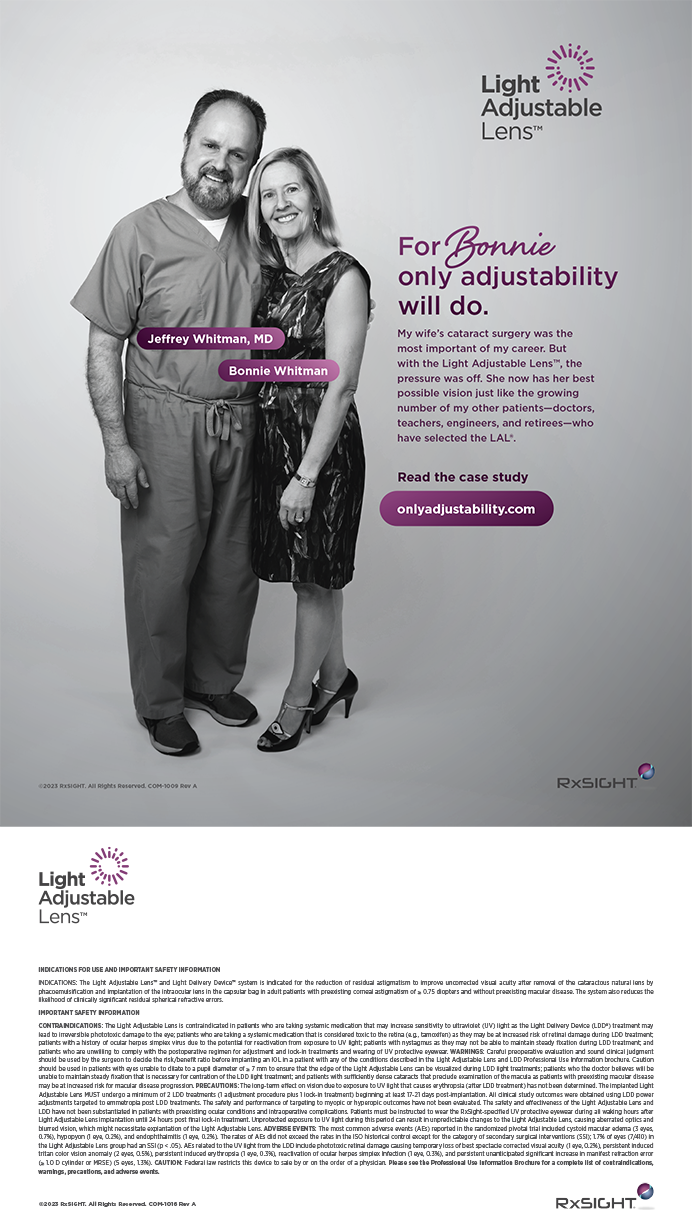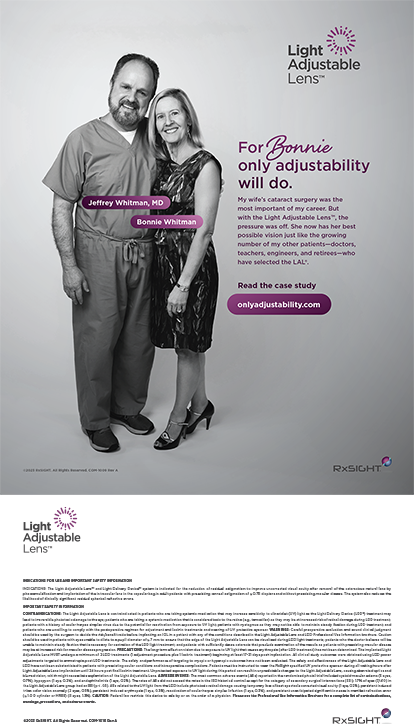MOBILE TECHNOLOGY
Handheld Autorefractors
By Bernard Spier, MD, FAAO

A portable but powerful handheld autorefractor adds flexibility inside and outside the clinic. It improves patient flow dynamics by taking the testing modality to the patient rather than having the patient leave the exam room to go to a testing station. It can relieve bottlenecks if a testing station is occupied, and it allows clinicians to carry the technology to satellite offices that may not have the same diagnostic equipment as the main office. The greatest impact, however, is in teleophthalmology settings. In certain rural areas, there are coverage gaps where patients often have to travel great distances to be seen by an eye care provider. Using a handheld autorefractor and an iPhone (Apple), a physician could design a protocol to remotely screen patients to detect refractive errors in need of follow-up.
COST SAVINGS
Extramural Surgery Centers and Laser-Assisted Cataract Surgery: A Cost-Saving Combo
By Matthias Claeys; Caroline Cardyn, MD; and Marnix Claeys, MD

Considering the increasing number of cataract operations that are expected to be performed annually around the world, it would make sense to have a mandate to perform most cataract surgeries at extramural eye centers. This would save health care and insurance companies millions of euros per year. Furthermore, extramural surgery centers may be more likely to have newer technologies and to have employees who are dedicated specifically to ophthalmic care, creating a more efficient and patient-centric environment for cataract surgery. This article details the barriers to moving more ophthalmic surgery into extramural eye clinics and reviews the results of a recent study of laser lens fragmentation in an extramural setting.
PATIENTS’ SATISFACTION
A Patient-Satisfaction Killer: Residual Astigmatism
By Pablo Laso, MD; Fernando Santander, MD, FEBO; Daniel Elies, MD; Mercé Morral, MD, PhD; and José L. Güell, MD, PhD


The development of toric IOLs has improved refractive results in cataract surgery for patients with significant astigmatism, but residual astigmatism is not always predictable. Unsatisfactory UCVA can be a postoperative outcome. Several factors may contribute to an astigmatic refractive surprise, including imprecise corneal measurements, miscalculation of the toric IOL power, error in the preoperative marking of the cornea, misalignment of the IOL, and the effect of the incision. The case presented in this article suggests that surgeons may be able to minimize residual astigmatism after implantation of toric IOLs by taking posterior corneal astigmatism into consideration, especially in eyes in which there is a remarkable difference between the refractive astigmatism and the keratometric astigmatism.


